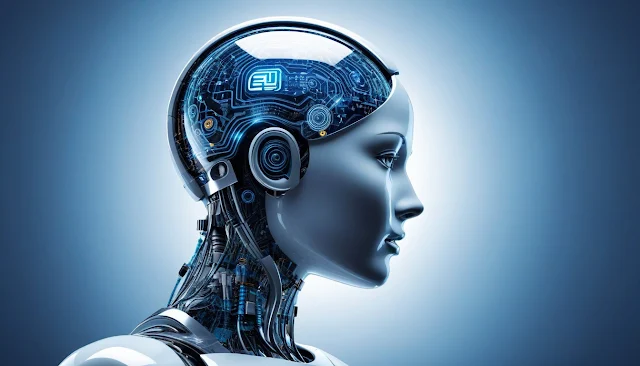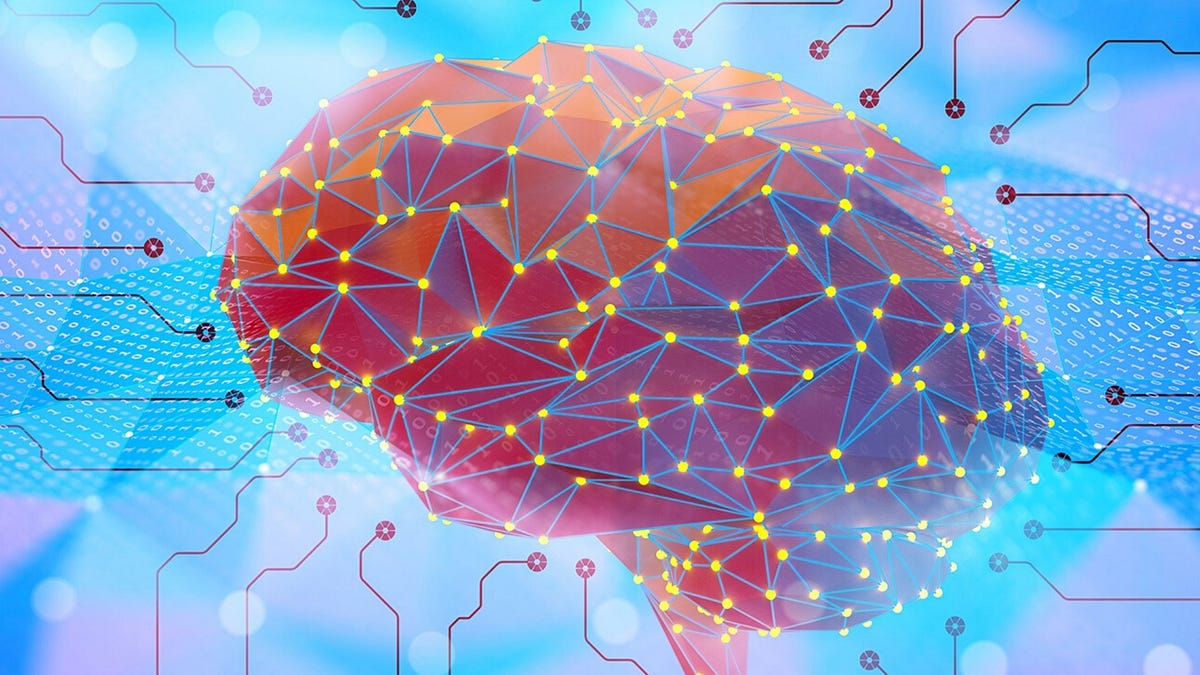Symbolic AI and Inference Engines: Powering Logical Reasoning in Intelligent Systems
Imagine teaching a computer to think like a human expert, analyzing problems step by step through clear, logical rules. This is the premise behind symbolic AI, one of artificial intelligence’s most enduring and influential approaches.
Like a master chess player evaluating moves or a doctor diagnosing a complex case, symbolic AI systems use human-readable symbols and explicit logical rules to solve problems. At their core lies the inference engine, a sophisticated reasoning component that processes these rules to draw conclusions, much like how human experts apply their knowledge to reach decisions.
While modern AI often focuses on neural networks and deep learning, symbolic AI continues to play a crucial role, especially in domains requiring transparent decision-making. The explicit reasoning capability of symbolic AI makes it inherently explainable, as each inference step follows logically from the knowledge base and applied rules.
This article explores how symbolic AI and inference engines work together to tackle complex reasoning tasks. We’ll examine their key mechanisms, real-world applications, and the emerging trend of hybrid systems that combine symbolic reasoning with neural networks. From expert systems in healthcare to automated planning in robotics, this powerful approach continues to shape the future of artificial intelligence.
Whether you’re a developer implementing AI systems, a decision-maker evaluating AI solutions, or simply curious about how machines can reason logically, understanding symbolic AI and inference engines provides crucial insights into one of AI’s most fundamental and practical approaches.
Core Principles of Symbolic AI


Symbolic AI represents and processes information through clear symbols, rules, and logical reasoning, similar to solving mathematical equations step by step.
The foundation of Symbolic AI rests on knowledge representation using human-readable symbols and rules. For instance, a Symbolic AI system might represent the concept ‘bird’ with rules like ‘if something has wings and can fly, it is likely a bird.’ This explicit encoding allows the system to make logical deductions about new information it encounters.
One of the most powerful features of Symbolic AI is its use of inference engines – specialized components that apply logical rules to draw conclusions. These engines work through ‘if-then’ rules systematically, much like a detective following clues to solve a mystery. For example, if the system knows ‘all mammals are warm-blooded’ and ‘dogs are mammals,’ it can conclude that ‘dogs are warm-blooded’ through logical inference.
Expert systems showcase the practical application of Symbolic AI principles. These sophisticated programs replicate human decision-making by applying specialized knowledge in specific domains. A medical expert system, for instance, might use a database of symptoms and conditions, combined with logical rules, to help diagnose patients – similar to how a doctor applies their medical knowledge to reach conclusions.
Modern implementations of Symbolic AI continue to demonstrate its value, particularly in fields requiring transparent reasoning and decision-making processes. Unlike black-box algorithms, Symbolic AI systems can explain their conclusions by showing the logical steps they followed, making them particularly valuable in critical applications where understanding the reasoning process is essential.
The structured nature of Symbolic AI lends itself well to applications requiring formal proofs and rigorous reasoning
Understanding Symbolic AI: A Core Methodology Explained
The clear, rule-based nature of Symbolic AI makes it especially useful in scenarios where decisions need to be traceable and verifiable. This transparency has made it a crucial tool in fields ranging from legal reasoning to financial compliance, where understanding how conclusions are reached is just as important as the conclusions themselves.
Applications of Symbolic AI


Humanoid robot examining a holographic human heart.
Symbolic AI has emerged as a powerful approach to artificial intelligence, offering unique capabilities in domains where logical reasoning and explainable decision-making are essential. By manipulating symbols and concepts rather than just numbers, these systems can tackle complex problems while maintaining transparency in their problem-solving process.
In the medical field, Symbolic AI powers diagnostic systems that assist doctors in analyzing patient symptoms and recommending potential diagnoses. For example, when a patient presents with specific symptoms, the system applies logical rules like “if patient has fever AND cough AND difficulty breathing, then investigate for pneumonia” to suggest possible conditions. This systematic approach helps healthcare professionals make more informed decisions while understanding the reasoning behind each suggestion.
Financial institutions leverage Symbolic AI for risk assessment and market analysis. The technology’s rule-based decision-making capabilities help analyze complex financial data, identify patterns, and evaluate investment opportunities. What makes this particularly valuable is the ability to trace exactly how the system arrived at its conclusions—a critical feature when dealing with sensitive financial decisions that affect people’s livelihoods.
Natural language processing represents another significant application area. Symbolic AI systems excel at parsing grammar rules and semantic relationships between words, enabling more accurate language translation and comprehension. Unlike purely statistical approaches, these systems can apply linguistic rules and logical reasoning to better understand the nuances of human communication.
In automated theorem proving, Symbolic AI demonstrates its prowess at logical deduction. These systems can verify mathematical proofs and solve complex logical puzzles by applying formal reasoning rules. This capability has profound implications for fields like software verification, where ensuring program correctness is crucial.
The explicit reasoning capability of Symbolic AI makes it inherently explainable, as each inference step follows logically from the knowledge base and applied rules.
Expert systems, perhaps one of the most practical applications of Symbolic AI, combine domain knowledge with logical reasoning to provide specialized expertise in fields ranging from equipment maintenance to regulatory compliance. These systems can explain their recommendations step by step, making them valuable tools for training and decision support.
Challenges in Implementing Symbolic AI
Despite its promise for emulating human-like reasoning, symbolic AI faces several significant hurdles in real-world applications. One of the most pressing challenges is the knowledge acquisition bottleneck—the substantial time and effort required to manually encode the vast amounts of information needed for these systems to function effectively.
A major obstacle lies in handling uncertainty and incomplete information. Unlike humans who can easily make reasonable assumptions when faced with partial data, symbolic AI systems typically struggle with non-monotonic reasoning—the ability to retract previous conclusions when new information becomes available. For example, while a human can easily understand that “birds fly” is generally true but doesn’t apply to penguins, encoding these kinds of exceptions and edge cases in a symbolic system requires extensive rule-crafting.
The challenge of scalability presents another significant barrier. As knowledge bases grow larger, the computational resources required to perform inference operations increase dramatically. This is particularly evident in complex domains like medical diagnosis, where the system needs to reason about thousands of potential conditions and their intricate relationships.
Domain-specific knowledge requirements pose yet another hurdle. Take autonomous driving as an example—a symbolic AI system would need explicitly encoded rules for every possible traffic scenario, weather condition, and road situation it might encounter. This creates an almost insurmountable task of trying to anticipate and program rules for every conceivable situation.
Additionally, symbolic systems often struggle with common sense reasoning—the kind of basic world knowledge that humans take for granted. While a human instantly knows that “water is wet” or “dropping fragile objects causes them to break,” encoding this type of implicit knowledge in a symbolic system requires enormous effort. This limitation becomes particularly apparent in natural language understanding tasks, where context and common sense are crucial for proper interpretation.
Integration with modern machine learning systems presents another challenge. While deep learning excels at pattern recognition and handling uncertain inputs, combining these capabilities with symbolic reasoning in a seamless way remains an open research problem. Current hybrid approaches often face difficulties in maintaining the benefits of both paradigms while addressing their respective limitations.
Despite these challenges, researchers continue to explore innovative solutions. Recent advances in neuro-symbolic AI show promise in combining the robustness of neural networks with the interpretability and reasoning capabilities of symbolic systems, potentially offering a path forward for addressing these fundamental challenges.
Hybrid Approaches: Combining Symbolic and Neural AI


Stylized brain representation with circuits and data. – Via medium.com
Modern artificial intelligence stands at a fascinating crossroads where two powerful paradigms converge – symbolic reasoning and neural networks. By thoughtfully integrating these approaches, hybrid AI systems are pushing the boundaries of what machines can achieve in complex cognitive tasks.
At its core, neuro-symbolic AI fuses the logical precision of rule-based systems with the pattern recognition capabilities of neural networks. This marriage of methodologies allows AI systems to both learn from data and reason about it systematically. For instance, while a neural network excels at processing raw sensory input like images or speech, the symbolic component can apply structured reasoning to make sense of that information using explicit rules and logic.
One of the most promising applications of hybrid AI is in natural language understanding. A hybrid approach allows the AI to not only recognize patterns in language but also reason about relationships between concepts, leading to more robust and interpretable results.
The benefits of this unified approach are particularly evident in complex reasoning tasks. While traditional neural networks might struggle with explicit logical inference, and purely symbolic systems can be brittle when facing real-world uncertainty, hybrid models leverage the complementary strengths of both paradigms. This enables more sophisticated capabilities in areas like theorem proving, where precise logical reasoning must be combined with pattern-based intuition.
Perhaps most importantly, hybrid AI systems offer greater transparency and interpretability compared to pure neural networks. The symbolic component provides explicit reasoning steps that humans can follow and verify, while the neural elements handle the crucial pattern recognition that makes the system practical and flexible in real-world applications.
Future Directions in Symbolic AI
The landscape of symbolic AI is transforming as researchers develop sophisticated hybrid architectures that combine symbolic and neural approaches. By integrating neural networks’ pattern recognition capabilities with symbolic systems’ logical reasoning, these hybrid models show promising results in mimicking human-like cognitive processes.
Modern hybrid systems are evolving to incorporate more sophisticated explainable AI (XAI) features, addressing one of the most pressing challenges in artificial intelligence. As researchers have noted, explanation has been a central concern of AI since its inception, from early rule-based systems to contemporary neural networks, with explainability advancing accuracy, trust, and accountability in AI systems.
A key development in this field is the emergence of neuro-symbolic integration techniques that enhance the transparency of AI decision-making. These approaches allow systems to provide clear, logical explanations for their conclusions while maintaining the adaptability and learning capabilities of neural networks. This synthesis represents a significant step forward in making AI systems more interpretable and trustworthy for real-world applications.
The future trajectory of symbolic AI points toward more dynamic and context-aware systems. Researchers are developing architectures that can seamlessly adapt to new situations while maintaining their ability to perform logical reasoning. This adaptability is crucial for deploying AI systems in complex, real-world environments where conditions frequently change and evolve.
Looking ahead, we can expect increased focus on developing hybrid models that can handle both structured and unstructured data effectively. These systems will likely incorporate advanced memory mechanisms, allowing them to retain and utilize past experiences in a way that more closely resembles human cognitive processes. The goal is to create AI systems that can not only process information but also understand and reason about it in ways that are both powerful and transparent to human users.
Conclusion: Leveraging Symbolic AI with SmythOS
The journey toward developing robust symbolic AI solutions requires careful consideration of both technical capabilities and practical implementation challenges. As organizations strive to enhance the transparency and trustworthiness of AI systems, integrated platforms that support hybrid approaches have become essential for driving innovation.
SmythOS stands out by providing a comprehensive suite of tools that tackle the core challenges of symbolic AI development. Its visual workflow builder simplifies complex AI processes into clear, traceable logic paths, while built-in debugging features allow developers to examine decision paths in real-time. This level of visibility is invaluable for teams working to create reliable and explainable AI systems.
The platform’s hybrid AI approach demonstrates a strong understanding of modern development needs. By integrating symbolic reasoning with neural capabilities, SmythOS offers a flexible framework that adapts to various use cases while maintaining transparency. The visual representation of logic rules makes it easier for teams to understand, modify, and optimize their AI systems, reducing the traditional opacity associated with complex AI operations.
Looking to the future, ongoing advancements in symbolic AI technologies promise even greater progress in both transparency and efficiency. As frameworks evolve to manage more sophisticated applications while providing clear explanations, platforms like SmythOS will increasingly influence the AI development landscape.
Moving forward requires a balance between innovation and accountability. As AI systems become more powerful, it is crucial that they remain comprehensible and controllable. By thoughtfully implementing integrated platforms and maintaining a focus on transparency, organizations can develop AI solutions that not only perform effectively but also gain users’ trust through their clarity and reliability.
Last updated:
Disclaimer: The information presented in this article is for general informational purposes only and is provided as is. While we strive to keep the content up-to-date and accurate, we make no representations or warranties of any kind, express or implied, about the completeness, accuracy, reliability, suitability, or availability of the information contained in this article.
Any reliance you place on such information is strictly at your own risk. We reserve the right to make additions, deletions, or modifications to the contents of this article at any time without prior notice.
In no event will we be liable for any loss or damage including without limitation, indirect or consequential loss or damage, or any loss or damage whatsoever arising from loss of data, profits, or any other loss not specified herein arising out of, or in connection with, the use of this article.
Despite our best efforts, this article may contain oversights, errors, or omissions. If you notice any inaccuracies or have concerns about the content, please report them through our content feedback form. Your input helps us maintain the quality and reliability of our information.